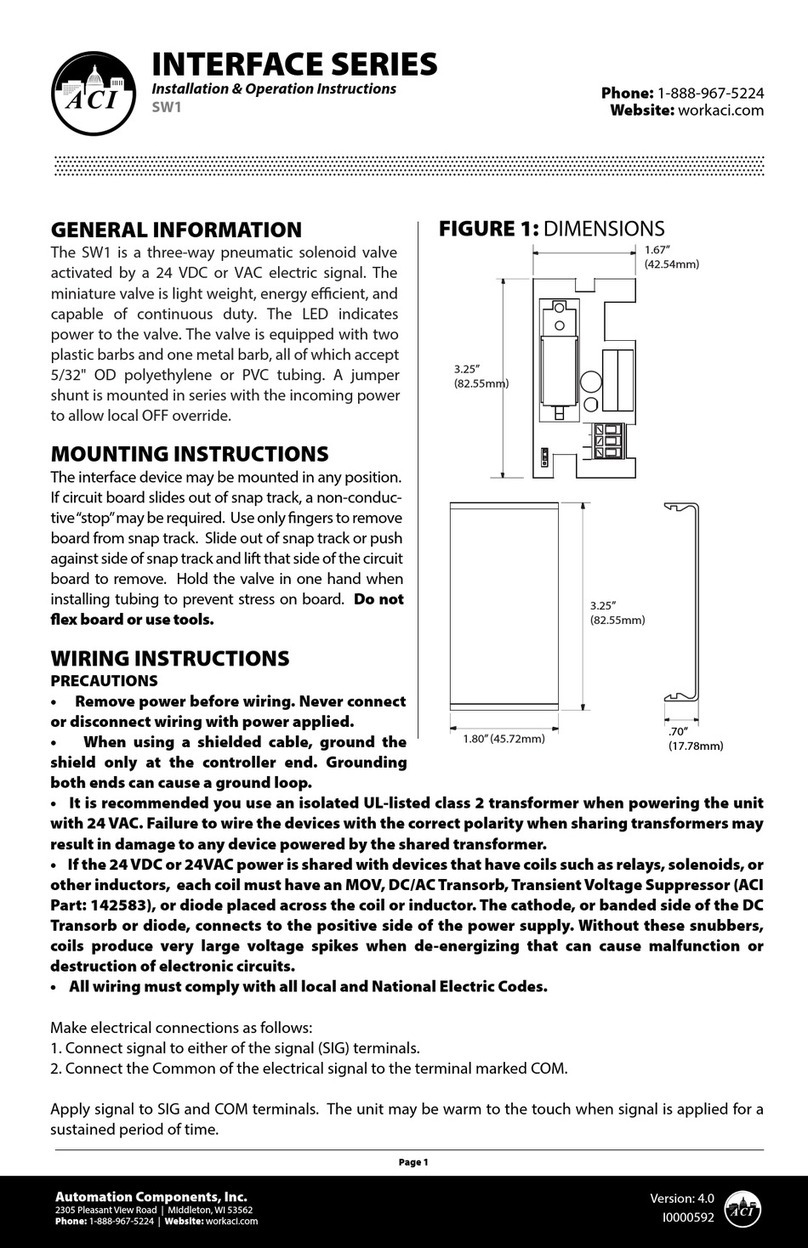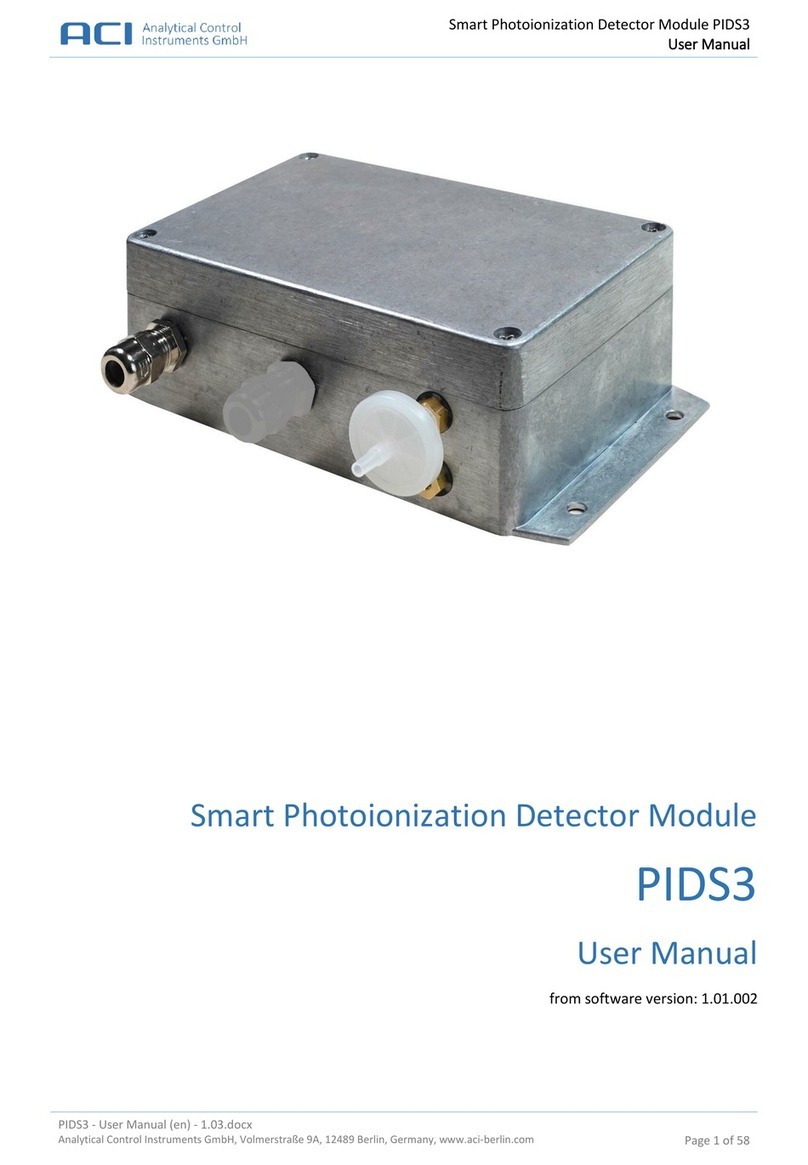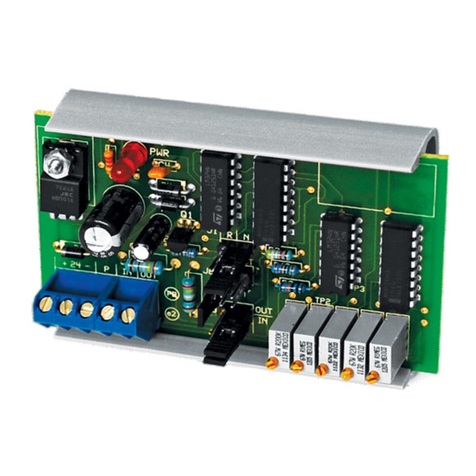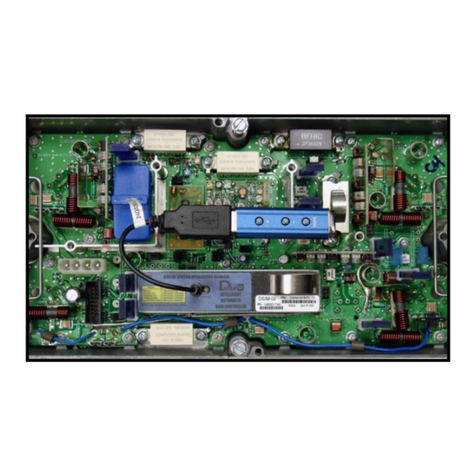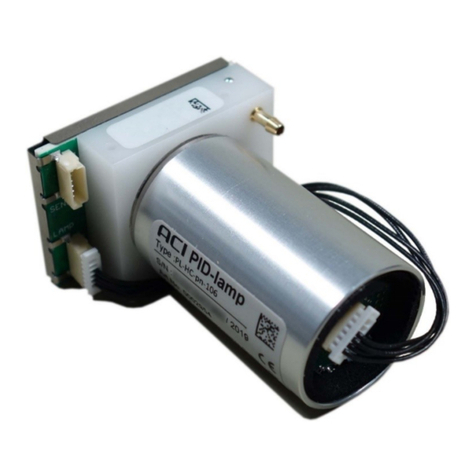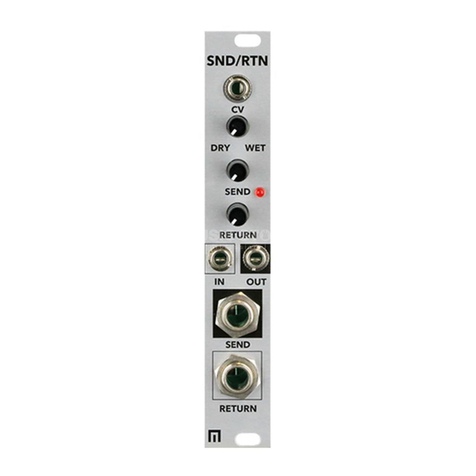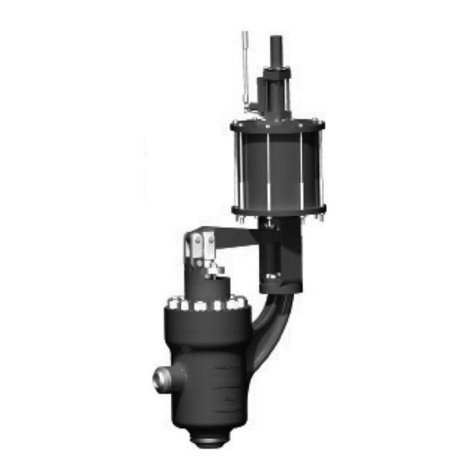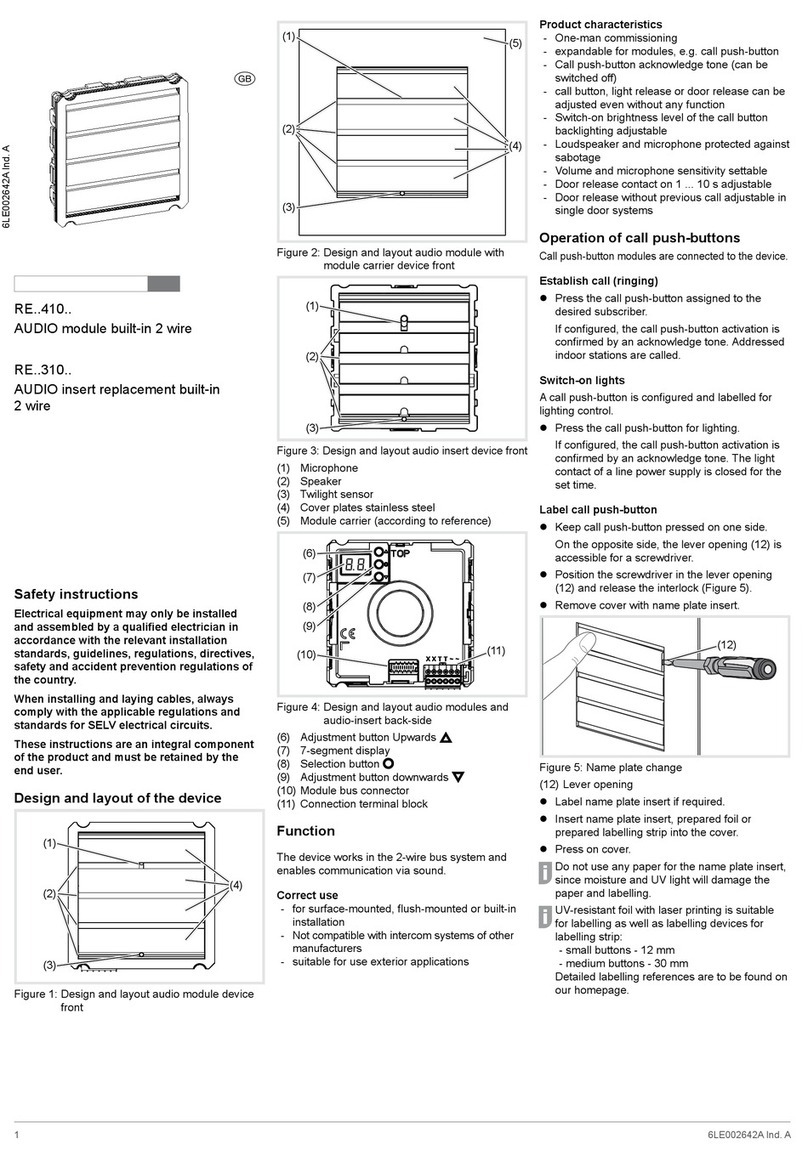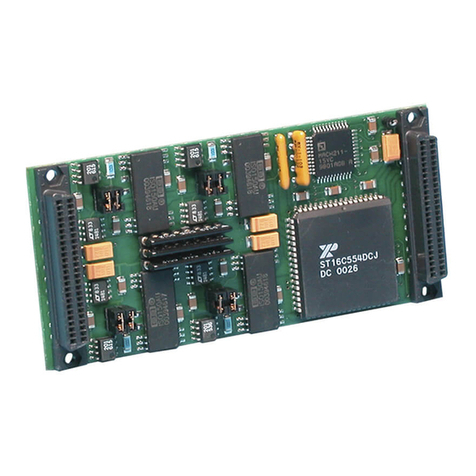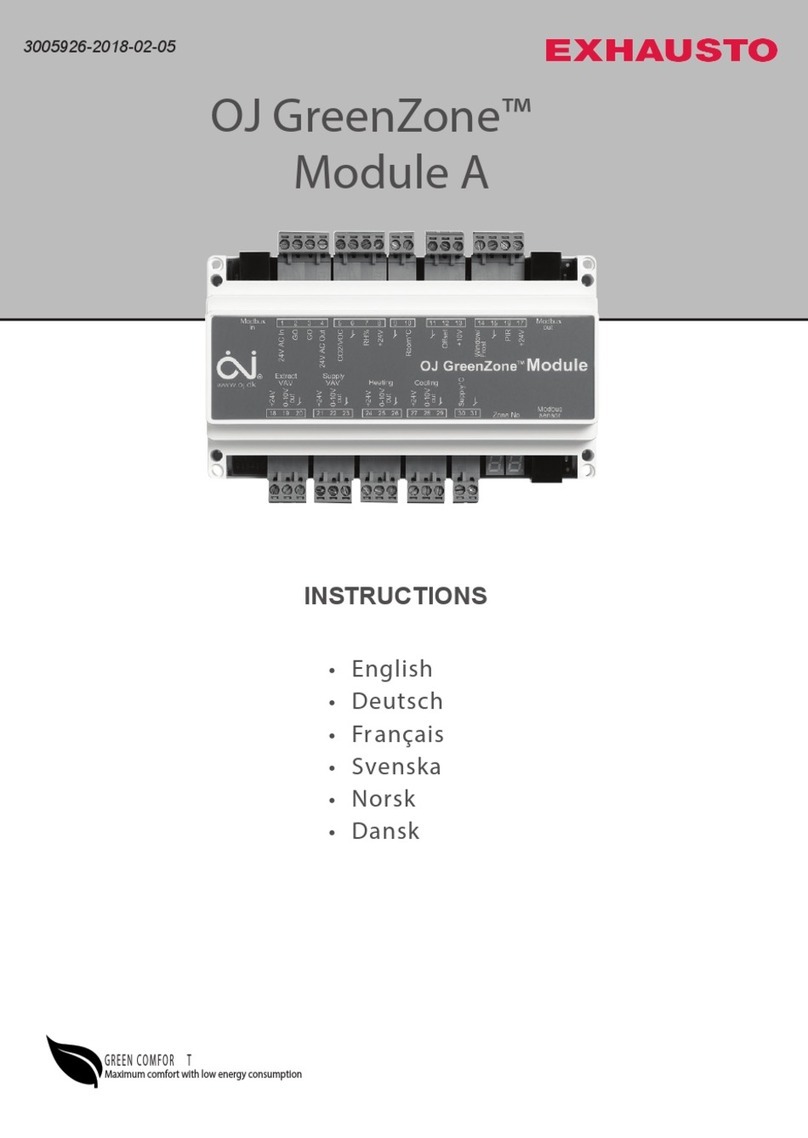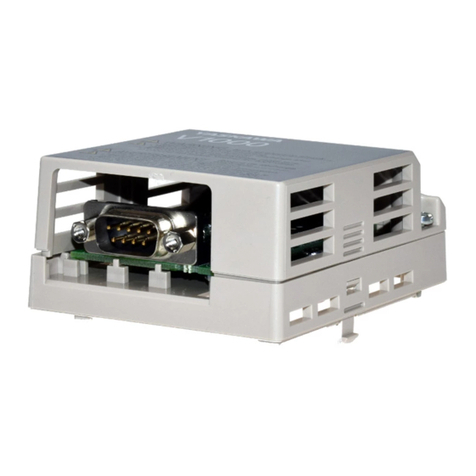aci DSIM-MV User manual

DSIM-MV
Installation Guide
Revision F

Page 2 of 18
DSIM-MV
Installation Guide Rev F
1. Quick Start Instructions for Single Pilot AGC Operatation
1. Remove the RF module cover and install the DSIM-MV AGC module into the amplifier.
Then re-install the RF module faceplate
2. Attach cable and controller to the DSIM-MV, the controller light should be solid blue
indicating manual mode (if not press mode button until it is).
3. Check and set desired amplifier levels.
4. Press mode button once. The controller light will flash blue and red for approximately
45 seconds.
5. When done the controller light will have a half second blue blink indicating that the
DSIM-MV is in AGC mode.
6. Remove the DSIM-MV interface cable from the amplifier, and the DSIM-MV is all set.
Controller Connection to DSIM
(Shown with faceplate cover removed for clarity)

Page 3 of 18
DSIM-MV
Installation Guide Rev F
Table of Contents
1. QUICK START INSTRUCTIONS FOR SINGLE PILOT AGC OPERATATION .................................2
2. DSIM-MV AGC MODULE & DSIM CONTROLLER OVERVIEW ...............................................4
3. DSIM MODE DEFINITIONS .................................................................................................5
4. DSIM CONTROLLER OPERATION INSTRUCTION GUIDELINES..............................................7
5. DSIM CONTROLLER STATUS LED ESSENTIALS .....................................................................8
6. DSIM-MV MODULE STATUS LED ESSENTIALS .....................................................................8
7. DSIM INTERFACE CABLE ASSEMBLY....................................................................................9
8. SINGLE PILOT AGC SETUP.................................................................................................10
9. THERMAL AGC SETUP......................................................................................................13
10. LED PILOT CHANNEL BLINK SERIES OVERVIEW...............................................................15

Page 4 of 18
DSIM-MV
Installation Guide Rev F
DSIM CONTROLLER
DIGITAL STATION INTELLIGENCE
MANAGER
Status LED
Red/Blue
DSIM Module
Interface
Connector
Mode
Decrease
Increase
DSIM Controller
Interface Cable
Connector
Status LED
Blue / Orange
2. DSIM-MV AGC Module & DSIM Controller Overview
The Digital Station Intelligence Manager (DSIM) product line is the next generation of automatic
gain control modules that provides the outside plant maintenance team with station diagnostic
tools that are unprecedented in the industry. The DSIM-MV AGC module is agile that allows the
program settings to be modified at any time to change the pilot channel number and type from
analog to digital or to change the operational mode into the SPAGC, Thermal AGC or manual
modes of operation. Having this flexibility to reprogram the DSIM-MV modules is a huge cost
savings when doing system pilot channel modifications over the fixed SPAGC or T-bode modules
since only the program settings need to be changed instead of having to change out the entire
AGC fixed module.
The DSIM-MV module can be programmed to operate as a single pilot AGC or a thermal Bode
AGC. In the SPAGC mode the DSIM-MV can be programmed to use either an analog or digital
pilot signal from channels 52 to 116. If the pilot channel is lost, the DSIM-MV module will default
into a thermal TGC mode and then return to the single pilot SPAGC mode automatically once the
pilot channel has been restored. In the thermal AGC mode the DSIM-MV module can be
programmed by the operator to have the upfront cable compensation settings at 9, 18, or 27 dB.
The DSIM-MV incorporates a bi-colored blue and orange LED that indicates the different
operational modes and settings of the DSIM-MV during setup and operation.

Page 5 of 18
DSIM-MV
Installation Guide Rev F
The DSIM controller is used to set the DSIM-MV module’s pilot channel and to change into the
different operational modes during the amplifier setup. The bi-colored blue and red LED
indicator's blinking patterns will denote the current optional mode setting.
The DSIM-MV modules will be configured at the factory to have the default channel 88 digital
(609.00 MHz) pilot channel programmed. The DSIM controller is used to set the DSIM-MV
modules to the customer selected pilot channel. In the setup of the DSIM-MV module the pilot
channel that is programmed into the controller is downloaded into the memory of the DSIM-MV
module. The pilot channel setting in the DSIM-MV module can be changed in the future by
simply using a controller with the new desired pilot channel programmed.
3. DSIM Mode Definitions
Operation Mode
Definition
MGC
In the Manual Gain Control (MGC) mode the DSIM automatic gain
control is turned off.
The MGC mode is used during the setup of the station so that no
gain adjustments are made when the levels and slopes are setup.
AGC
In Automatic Gain Control (AGC) mode will make gain adjustments
to the station based on the level changes that occur on the pilot
channel.
TGC
In Thermal Gain Control (TGC) mode the DSIM will make gain
adjustments based on the changes in the internal temperature of
the station. In the TGC mode there is a selection of 9, 18 or 27 dB
for the amount of cable that is in front of the station. The dB of
cable setting is used to more accurately predict actual losses that
occur in the cable with the changes in the outside temperature.
Note: Thermal control operational mode should not be used in
amplifiers that are pedestal mounted for underground networks.
These units operate on the assumption that cable temperature will
change at the same rate as amplifier temperature, while amplifiers
mounted in pedestals will vary in temperature far greater than the
underground cable temperature.

Page 6 of 18
DSIM-MV
Installation Guide Rev F
AGC mode:
The DSIM will maintain pilot level stability
The controller will blink blue every half sec.
The DSIM LED will give a channel &
ch type pattern
AGC mode: Thermal Fallback
The DSIM will calculate the output level until the
pilot channel returns. Then the DSIM will resume
AGC mode.
The controller will blink blue every half sec
The DSIM will flash blue/ orange
Align Process: Thermal Fallback
If the Align Process fails check/ adjust levels or
reduce AGC PAD. return the MGC mode to try
again. DO NOT leave the DSIM in this mode.
The controller will flash blue/ red
The DSIM will flash blue/ orange
MGC mode:
This is the default mode for Amp. Setup
The controller LED will be solid blue
The DSIM LED will blink blue every half sec
TGC mode:
This mode calculates the output level based on
the internal Amp. Temperature
The controller LED will be solid purple
The DSIM LED will give the cable length
(9, 18, 27) dB and three long blinks
DSIM Locks on to the
channel successfully, it
starts the AGC mode
Press MODE
once to start the
align process
If the pilot is too
low, the DSIM
will use the
TGC process Press MODE
once from any
of these 4
modes to go to
TGC mode
If the pilot drop
more than 10
dB the DSIM
will go to
thermal fallback
Align Process:
This takes 45 sec. to lock on to the pilot CH.,
and save the pilot level
The controller will flash blue/ red
The DSIM will flash CH & type pattern
DSIM Mode Flow Chart
Press MODE once to return to MGC mode

Page 7 of 18
DSIM-MV
Installation Guide Rev F
4. DSIM Controller Operation Instruction Guidelines
Switch
Function
Description
+
Increase
In MGC Mode, Click to increase RF output level
(See Note 1)
In AGC Mode, no function
In TGC Mode, Click to increase cable length value
-
Decrease
In MGC Mode, Click to decrease RF output level
(See Note 1)
In AGC Mode, no function
In TGC Mode, Click to decrease cable length value
Mode
Mode Change
In MGC mode, Click to go to Align Mode to load
controller channel setting, DSIMmodule will then
automatically switch to AGC mode
In AGC Mode, Click to return to TGC Mode
In TGC Mode, Click to go to MGC Mode
Note 1: Making adjustment to the output levels is only used when setting up the DSIM modules in
temperatures bellow 32ºF / 0ºC or above 104ºF / 40ºC.

Page 8 of 18
DSIM-MV
Installation Guide Rev F
5. DSIM Controller Status LED Essentials
6. DSIM-MV Module Status LED Essentials
Operation Blinking Patterns for DSIM-MV Module
LED Blinking Pattern
Indications
Steady Repeating Blue Dashes
Manual Mode
Series of Blue Blinks
Pilot Channel Number ‐See tables in section
10 at the end of the guide for blinking sequences
Single Blue Long Dash Between Series
of Blue Blinks
IRC Analog channel is set
2 Blue Long Dashes Between Series
of Blue Blinks
Digital channel is set
3 Blue Long Dashes Between Series
of Blue Blinks
TGC Mode‐The default cable length setting for
TGC mode is 27 dB of cable in front of the
amplifier
Quick Blue / Orange Blinks
Pilot paste in progress‐Wait
or Pilot channel not found or lost
LED Blinking Pattern
Indications
Quick Blue / Red Blinks
DSIM controller to module syncing process -
Occurs when controller is installed into the DSIM
module.
Aligning process: in progress
Steady on Blue
In MGC Mode
Series of Blue Blinks
In AGC Mode
Steady on Purple
In TGC Mode

Page 9 of 18
DSIM-MV
Installation Guide Rev F
LED Fault Conditions Blinking Patterns
LED Blinking Pattern
Indications
Steady on Pink
24 volt input into DSIM-MV module is out of the
operational range of 21.5 to 26.5 VDC. If this
occurs, check for correct AC voltage input to the
amplifier and for correct output DC voltage of
internal power supply to the RF module
Steady Repeating Orange Blinks
Temperature in DSIM-MV module is too high / low
(above 221ºF/105ºC or below -40ºF/-40ºC)
Quick Blue / Orange Blinks
Pilot Lost; DSIM-MV automatically switches to
Thermal (TGC) mode until Pilot channel is
restored
Note: The DSIM-MV LED blinks after the pilot channel count will be orange during programming and
blue when in operation.
7. DSIM Interface Cable Assembly
To make the connection from the DSIM controller to the DSIM-MV AGC module use cable
assembly P/N 240330-01 as shown below. Note: The RF module is shown with faceplate
cover removed for clarity.

Page 10 of 18
DSIM-MV
Installation Guide Rev F
8. Single Pilot AGC Setup
The DSIM controllers will come preset to have a desired pilot channel stored in the memory. The
controller is used to set the DSIM-MV module to the desired pilot channel by downloading the
pilot channel program into the DSIM-MV module's memory during setup.
1. Remove the RF module faceplate and install the DSIM-MV AGC module into the amplifier.
Then re-install the RF module faceplate.
2. For new amplifier installations allow the amplifier to warm up for TEN minutes prior to
setting up the DSIM-MV AGC module.
3. If the amplifier has a main gain reserve pot, turn until output levels are at max point.
Measure the highest channel level.
4. Back off main gain pot 4 dB @ 750MHz or 3 dB @ 547MHz.
5. Set the ALSC switch to on.
6. Connect the DSIM controller to the DSIM-MV AGC module with the interface cable
assembly
7. The controller LED will then flash red / blue rapidly while the DSIM controller and DSIM-MV
module completes the syncing process. This process will take approximately
2-3 seconds to complete.
8. Once the controller LED stops flashing the red / blue sequence, it should then display a
constant blue, indicating that it is in MGC (manual) mode. Note: If the controller LED is
flashing blue, it indicates that it is in AGC mode; click “Mode” button two times to go from
AGC mode to MGC Manual Mode. In addition, if the controller LED displays a constant
purple, it indicates that it is in TGC mode; click “Mode” button once to go from TGC to MGC
Manual Mode.
9. Set the level and slope of the amplifier to the design specifications with the input pad and
Equalizer.
10. If the outside temperatures are below 32ºF / 0ºC or above 104ºF / 40ºC, then the RF
levels will need to be adjusted to ensure that the full gain compensation range of the DSIM
will be available over the operational temperature range. If the outside temperatures are
between 32ºF / 0ºC and 104ºF / 40ºC then go to step 14.

Page 11 of 18
DSIM-MV
Installation Guide Rev F
11. Measure and record the RF output level of the amplifier at the highest operating frequency.
Using the table bellow adjust the RF output level by pushing the “+" button to increase or
the "-“ button to decrease the RF output level. Pressing the button once is used for small
increments, holding the button down is for large increments.
Below -13ºF (-25ºC)
-2dB
Between 32ºF (0ºC) & -13ºF (-25ºC)
-1dB
Between 32ºF (0ºC) & 104ºF (40ºC)
no change
Between 104ºF (40ºC) & 122ºF (50ºC)
+1dB
Above 122ºF (50ºC)
+2dB
12. After the RF level adjustment of the DSIM AGC module has been made, reset the RF
output level to the value recorded in step 11 by adjusting the input pad value.
13. All DSIMs have a thermal fallback default setting of 27 dB. To change it, push the MODE
button twice. The controller LED should be purple indicating TGC mode. There are three
TGC factor options: 9 dB, 18 dB and 27 dB. The blinking pattern should indicate 27dB.
Push the '-' button once for 18 dB or twice for 9 dB. Check the blink pattern to verify
thermal fallback value.
a. Blink patterns for TGC
i. 27 dB (2 fast blinks, pause, 7 fast blinks, pause, 3 long blinks)
1. For more than 1000ft of cable before the amplifier
ii. 18 dB (1 fast blink, pause, 8 fast blinks, pause, 3 long blinks)
1. For 600ft - 1000ft of cable before the amplifier
iii. 9 dB (9 fast blinks, pause, 3 long blinks)
1. For less than 600ft of cable before the amplifier
14. Press the 'Mode' once to go to MGC mode. Check that the output level and slope are
correct. Once level and slope are set, press “Mode” once to exit MGC (manual) mode. The
DSIM will now go thru the alignment process. The LED on the controller will flash blue and
red (about 45 seconds) until the alignment process has completed
15. When the alignment process has completed, the controller LED will blink blue indicating
that the DSIM is now in the AGC mode. If the LED does not change to blinking blue, and
instead the DSIM LED flashes blue and orange the pilot signal is either too high or too low
going into the DSIM. Check the output signal and make sure that the ADU pot is fully
counter clock wise. Press the mode button 2 times and then go back to step 14.

Page 12 of 18
DSIM-MV
Installation Guide Rev F
16. Check the LED on the DSIM-MV Module to make sure the channel number is right. Refer
to section 10 for pilot channel blinking count overview.
17. Remove the DSIM-MV interface cable from the amplifier, and the DSIM-MV is all set!

Page 13 of 18
DSIM-MV
Installation Guide Rev F
9. Thermal AGC Setup
In setting up the DSIM-MV modules as a Thermal AGC the cable length dB values will need to be
adjusted to match the dB of cable that is in front of the station. The DSIM controllers will come
preset to have a default cable length setting of 27 dB in the memory. The controller is used to
set the DSIM-MV module to either 9 dB, 18 dB, or 27 dB of cable by simply clicking the “Increase”
or “Decrease” buttons on the controller.
1. Remove the RF module faceplate and install the DSIM-MV AGC module into the amplifier.
Then re-install the RF module faceplate.
2. For new amplifier installations allow the amplifier to warm up for a few minutes prior to
setting up the DSIM-MV AGC module.
3. Set the ALSC switch to on.
4. Connect the DSIM controller to the DSIM-MV AGC module with the interface cable
assembly.
5. The controller LED will then flash red / blue rapidly while the DSIM controller and DSIM-MV
module completes the syncing process. This process will take approximately
2-3 seconds to complete.
6. Once the controller LED stops flashing the red / blue sequence, it should then display a
constant blue, indicating that it is in MGC (manual) mode. Click “Mode” button twice to go
from MGC to TGC. The LED on the controller should now be a constant purple. Note if the
LED is flashing fast for the AGC channel count followed by an orange 1 or 2 blink, click the
"Mode" button once to change from AGC to TGC.
7. All DSIMs have a TGC default setting of 27 dB. There are three TGC factor options: 9 dB,
18 dB and 27 dB. The blinking pattern should indicate 27dB. Push the '-' button once for
18 dB or twice for 9 dB. Check the blink pattern to verify TGC value.
a. Blink patterns for TGC
i. 27 dB (2 fast blinks, pause, 7 fast blinks, pause, 3 long blinks)
1. For more than 1000ft of cable before the amplifier
ii. 18 dB (1 fast blink, pause, 8 fast blinks, pause, 3 long blinks)
1. For 600ft - 1000ft of cable before the amplifier
iii. 9 dB (9 fast blinks, pause, 3 long blinks)
1. for less than 600ft of cable before the amplifier

Page 14 of 18
DSIM-MV
Installation Guide Rev F
8. Click + / - button to go to the desired cable length setting choosing from 9 dB, 18 dB, or 27
dB. This cable length dB setting is the dB amount of cable in front of the amplifier.
9. Check the LED on the DSIM-MV Module to make sure the cable length setting is correct.
10.Set the level and slope of the amplifier to the design specifications with the input pad and
Equalizer.
11.Remove the DSIM-MV interface cable from the amplifier, and the DSIM-MV is all set!
Cable Length
dB Value
Set 1
Set 2
Set 3
9 dB
9-Dits
-
3 Long Dashes
Blue-Operation
Orange-programming
18 dB
1-Dit
8-Dits
27 dB
2-Dits
7-Dits

Page 15 of 18
DSIM-MV
Installation Guide Rev F
10. LED Pilot Channel Blink Series Overview
Channel
IRC
DIGITAL
Set 1
Set 2
Set 3
Set 4
MHz
MHz
Blue
Blue
Blue
Blue-Operation
Orange-Programming
52
391.25
393.00
5-Dits
2-Dits
1 IRC / 2 DIGITAL
Long dash
53
397.25
399.00
5-Dits
3-Dits
54
403.25
405.00
5-Dits
4-Dits
55
409.25
411.00
5-Dits
5-Dits
−
56
415.25
417.00
5-Dits
6-Dits
−
57
421.25
423.00
5-Dits
7-Dits
−
58
427.25
429.00
5-Dits
8-Dits
−
59
433.25
435.00
5-Dits
9-Dits
−
60
439.25
441.00
6-Dits
1-Dash
−
61
445.25
447.00
6-Dits
1-Dits
−
62
451.25
453.00
6-Dits
2-Dits
−
63
457.25
459.00
6-Dits
3-Dits
−
64
463.25
465.00
6-Dits
4-Dits
−
65
469.25
471.00
6-Dits
5-Dits
−
66
475.25
477.00
6-Dits
6-Dits
−
67
481.25
483.00
6-Dits
7-Dits
−
68
487.25
489.00
6-Dits
8-Dits
−
69
493.25
495.00
6-Dits
9-Dits
−
70
499.25
501.00
7-Dits
1-Dash
−
71
505.25
507.00
7-Dits
1-Dits
−
72
511.25
513.00
7-Dits
2-Dits
−
73
517.25
519.00
7-Dits
3-Dits
−

Page 16 of 18
DSIM-MV
Installation Guide Rev F
Channel
IRC
DIGITAL
Set 1
Set 2
Set 3
Set 4
MHz
MHz
Blue
Blue
Blue
Blue-Operation
Orange-Programming
74
523.25
525.00
7-Dits
4-Dits
1 IRC / 2 DIGITAL
Long dash
75
529.25
531.00
7-Dits
5-Dits
76
535.25
537.00
7-Dits
6-Dits
−
77
541.25
543.00
7-Dits
7-Dits
−
78
547.25
549.00
7-Dits
8-Dits
−
79
553.25
555.00
8-Dits
9-Dits
−
80
559.25
561.00
8-Dits
1-Dash
−
81
565.25
567.00
8-Dits
1-Dits
−
82
571.25
573.00
8-Dits
2-Dits
−
83
577.25
579.00
8-Dits
3-Dits
−
84
583.25
585.00
8-Dits
4-Dits
−
85
589.25
591.00
8-Dits
5-Dits
−
86
595.25
597.00
8-Dits
6-Dits
−
87
601.25
603.00
8-Dits
7-Dits
−
88
607.25
609.00
8-Dits
8-Dits
−
89
613.25
615.00
8-Dits
9-Dits
−
90
619.25
621.00
9-Dits
1-Dash
−
91
625.25
627.00
9-Dits
1-Dits
−
92
631.25
633.00
9-Dits
2-Dits
−
93
637.25
639.00
9-Dits
3-Dits
−
94
643.25
645.00
9-Dits
4-Dits
−
100
649.25
651.00
1-Dits
1-Dash
1-Dash

Page 17 of 18
DSIM-MV
Installation Guide Rev F
Channel
IRC
DIGITAL
Set 1
Set 2
Set 3
Set 4
MHz
MHz
Blue
Blue
Blue
Blue-Operation Orange-
Programming
101
655.25
657.00
1-Dits
1-Dash
1-Dits
1 IRC / 2 DIGITAL
Long dash
102
661.25
663.00
1-Dits
1-Dash
2-Dits
103
667.25
669.00
1-Dits
1-Dash
3-Dits
104
673.25
675.00
1-Dits
1-Dash
4-Dits
105
679.25
681.00
1-Dits
1-Dash
5-Dits
106
685.25
687.00
1-Dits
1-Dash
6-Dits
107
691.25
693.00
1-Dits
1-Dash
7-Dits
108
697.25
699.00
1-Dits
1-Dash
8-Dits
109
703.25
705.00
1-Dits
1-Dash
9-Dits
110
709.25
711.00
1-Dits
1-Dits
1-Dash
111
715.25
717.00
1-Dits
1-Dits
1-Dits
112
721.25
723.00
1-Dits
1-Dits
2-Dits
113
727.25
729.00
1-Dits
1-Dits
3-Dits
114
733.25
735.00
1-Dits
1-Dits
4-Dits
115
739.25
741.00
1-Dits
1-Dits
5-Dits
116
745.25
747.00
1-Dits
1-Dits
6-Dits

Page 18 of 18
DSIM-MV
Installation Guide Rev F
ACI Communications, Inc.
23307 66th Avenue South
Kent, Washington 98032
Tel: (253) 854-9802
Fax: (253) 813-1001
Toll Free: (800) 336-3526
2015 ACI Communications, Inc.
All rights reserved
Rev F10-03-2015 Printed in U.S.A.
ACI Communications, Inc. reserves the right to discontinue the
manufacture or change specifications without prior notice on any
parts illustrated in this data sheet. Registered trademarks are the
property of their respective owners
Table of contents
Other aci Control Unit manuals
Popular Control Unit manuals by other brands

Global
Global M3 SYSTEM operating manual
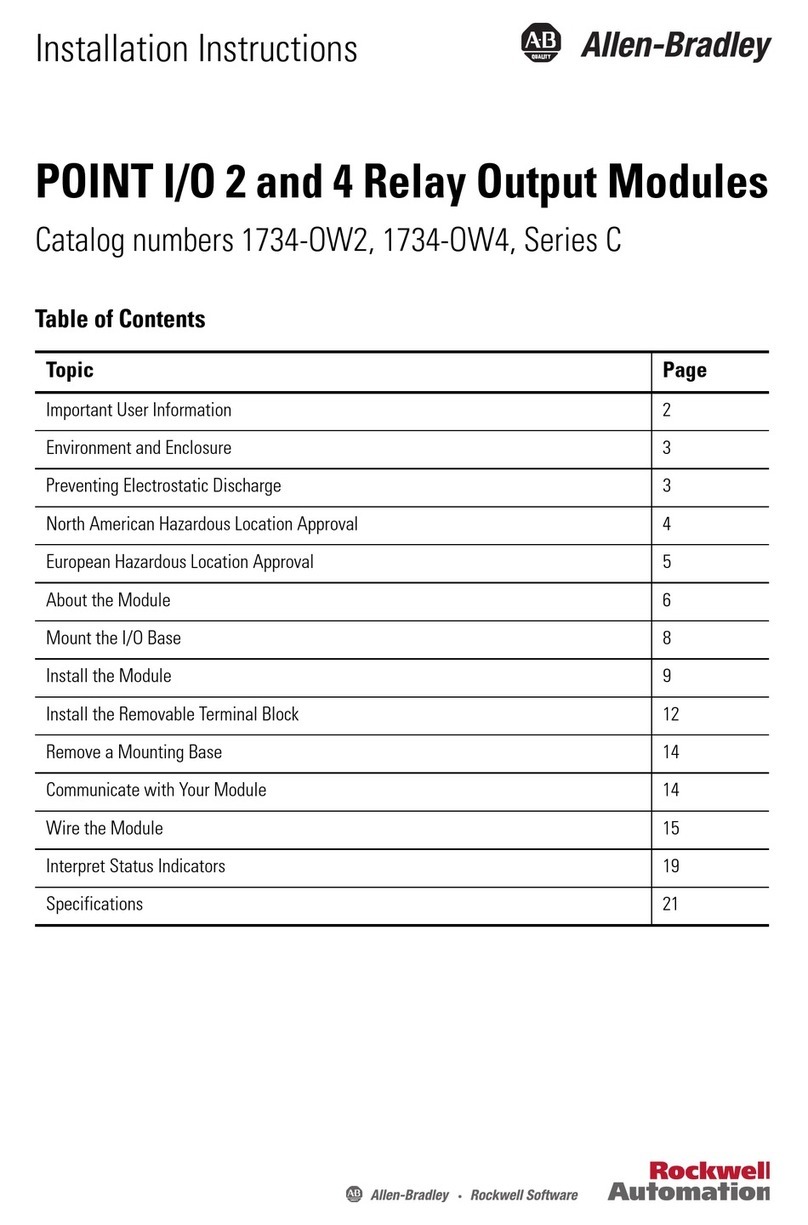
Allen-Bradley
Allen-Bradley POINT I/O series installation instructions
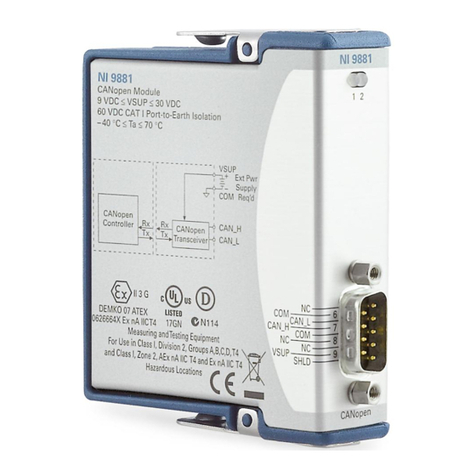
National Instruments
National Instruments NI 9881 Getting started guide
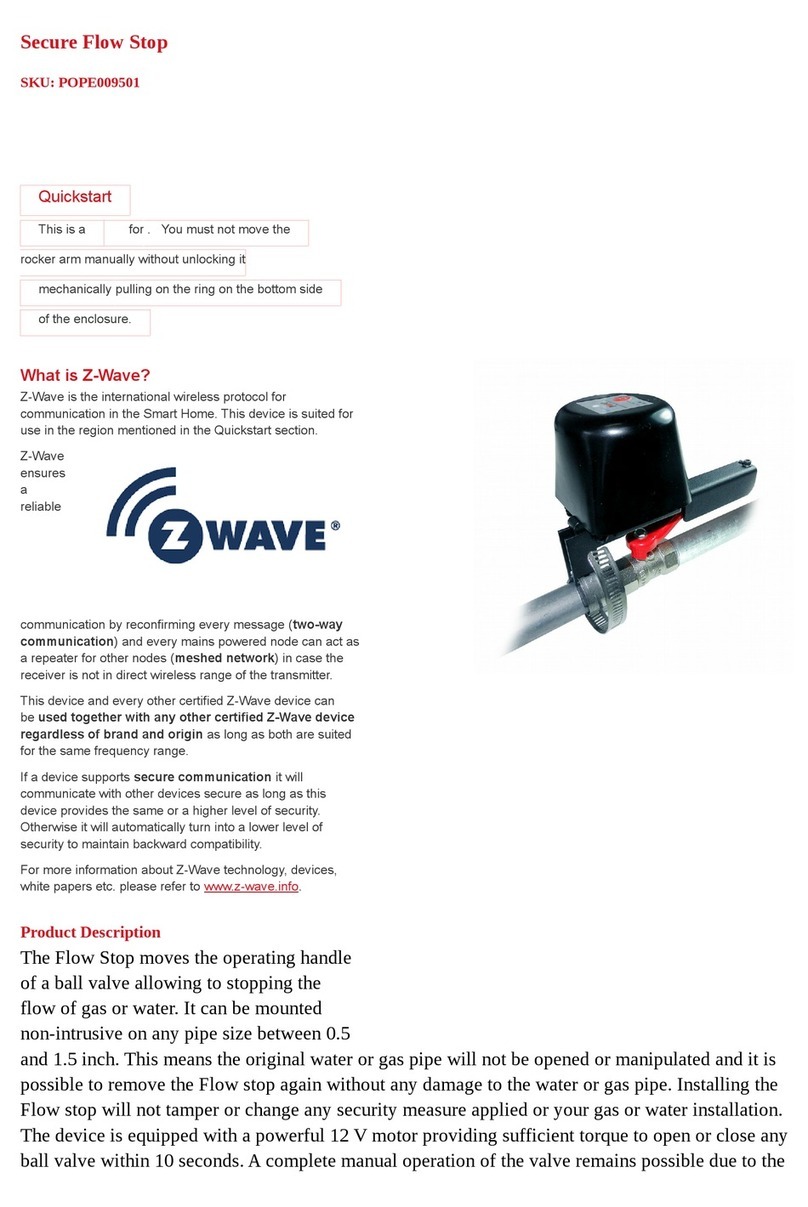
Popp
Popp Flow Stop quick start
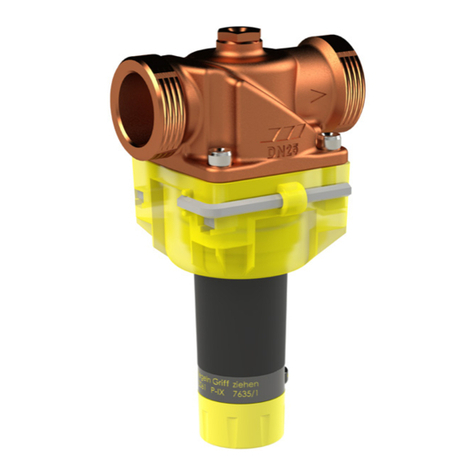
Kemper
Kemper 710 0G Installation and operating manual
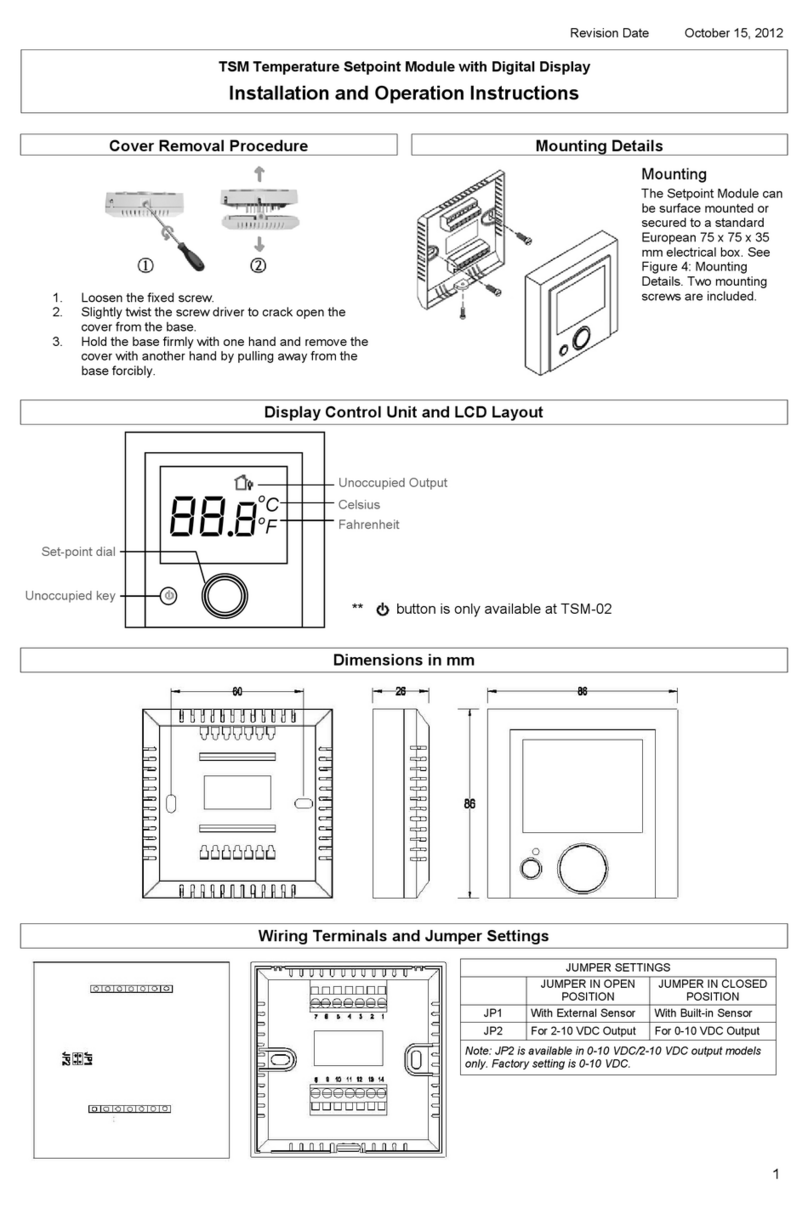
TSM
TSM TSM-02 Assembly, installation and operation instructions
